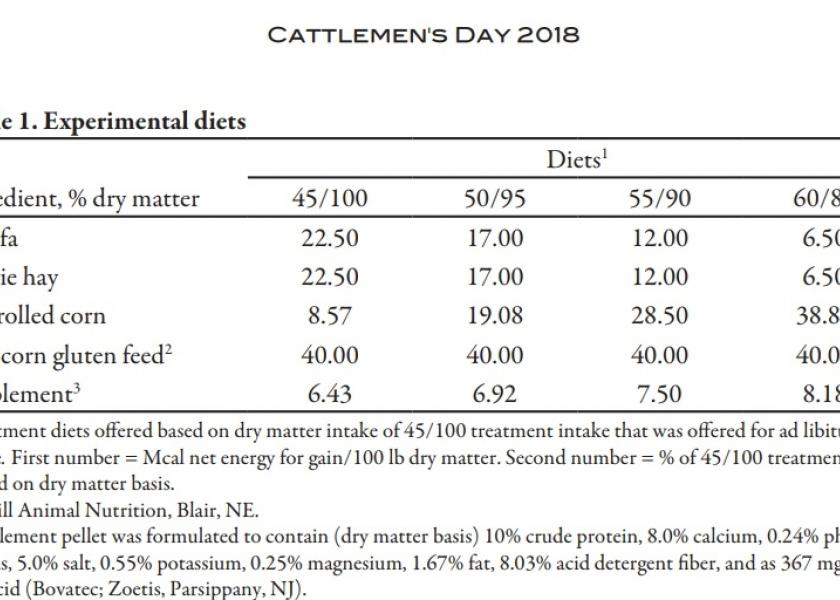Limit Feeding Allows Higher-Energy Receiving Rations

The transition to high-energy rations, particularly those with high starch levels, can involve risk of acidosis, stress and compromised immunity in feeder calves. However, results of a Kansas State University trial indicate cattle feeders can boost the percentage of energy in the receiving ration while use limit-feeding strategies to minimize negative effects.
The researchers aimed to measure effects of limit-feeding high-energy diets on the immune system, stress, and inflammation as well as differences in these parameters between healthy and sick animals under the dietary conditions. For this study, the researchers assembled 354 crossbred heifers from sale barns in Alabama and Tennessee, and shipped them to the K-State Stocker Unit in Manhattan, Kan.
They randomly sorted the heifers into four treatment groups, with eight pens of 11 or 12 heifers per treatment, for a total of 32 pens. They formulated the treatment diets to provide 45, 50, 55, or 60 Mcal net energy for gain per 100 pounds of dry matter. Each ration was adjusted to include 40% wet corn gluten feed on a dry-matter basis. One group received ad libitum feed at the 45 Mcal level, while the others received 95% of ad libitum at 50 Mcal, 90% at 55 Mcal and 85% at 60 Mcal.
In this test, the researchers found no diet or diet × day interactions for titer level production toward viruses, haptoglobin, or fecal cortisol metabolite excretion. Haptoglobin increased for all dietary treatments between days 0 and 14 and decreased from days 14 to 27. The researchers did note that morbid animals demonstrated increased haptoglobin and decreased titers compared to healthy pen mates, independent of dietary treatment group.
The researchers concluded that increased dietary energy from wet corn gluten feed in limit-fed receiving diets does not increase stress, inflammation as measured by haptoglobin, or immune function measured by titer levels to significant industry viruses.
The Kansas State Cattlemen’s Day report is available online.
For more on limit feeding and by-product feeds see these articles on BovineVetOnline:
Limit Feeding Cows Corn as an Alternative to Hay
Mineral Supplementation Changes When Feeding Distillers Grains







